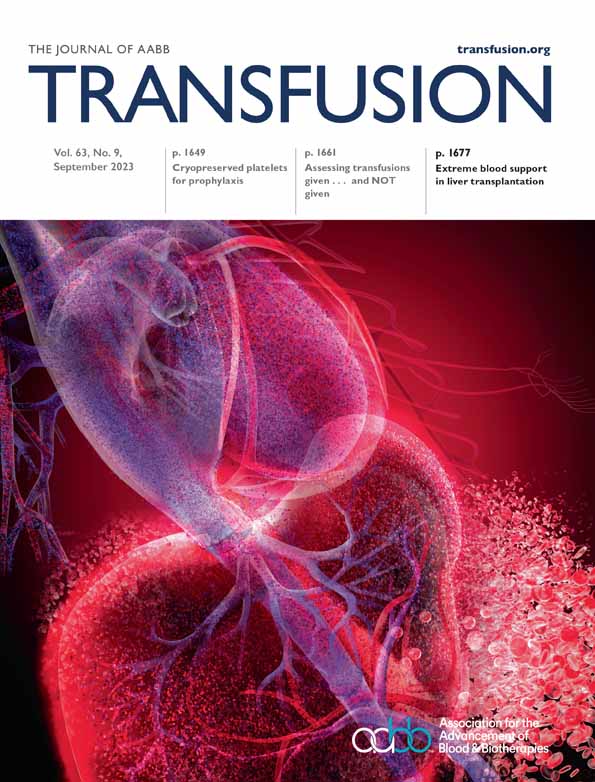How do we build a comprehensive Vein-to-Vein (V2V) database for conduct of observational studies in transfusion medicine? Demonstrated with the Recipient Epidemiology and Donor Evaluation Study-IV-Pediatric V2V database protocol
Abstract
Background
The Recipient Epidemiology and Donor Evaluation Study-IV-Pediatric (REDS-IV-P) is the fourth iteration of the National Heart, Lung, and Blood Institute's REDS program and includes a focus on pediatric populations. The REDS-IV-P Vein-to-Vein (V2V) database encompasses linked information from blood donors, blood components, and patients to facilitate studies in transfusion medicine.
Study Design and Methods
The V2V database is an Observational Medical Outcomes Partnership Common Data Model database. The study period is April 1, 2019 through December 31, 2023. Data from all donors and donations at participating blood centers, all blood components derived from the donations, and all inpatient visits and selected outpatient visits at participating hospitals are included. The database captures all information within patient data domains not restricting data to a preselected subset of medical records.
Results
The V2V database contains data from 7 blood centers and 22 hospitals. We project the database will have over 2 billion pieces of information from 1.3 million patients with 20.6 million healthcare encounters. The database will include data on approximately 1 million transfused units and 2.3 million donors with approximately 6.8 million donation visits.
Conclusion
The REDS-IV-P V2V database is a comprehensive database with data from millions of blood donors, blood components, and patients. A diverse set of data from the encounters are included in the database such that emerging questions can likely be addressed. The Observational Medical Outcomes Partnership Common Data Model is an efficient, flexible, and increasingly used common data model. The final de-identified database will be publicly available.
CONFLICT OF INTEREST STATEMENT
The authors declare no conflicts of interest.




